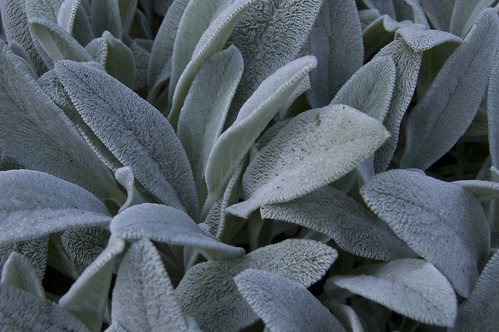Tip of the Week: Camels of the Plant World
Posted in Gardening Tips on August 2 2010, by Sonia Uyterhoeven
 |
Sonia Uyterhoeven is Gardener for Public Education. Join her each weekend for home gardening demonstrations on a variety of topics in the Home Gardening Center. |
 What makes a plant drought tolerant? Plants have evolved some clever ways of adapting to dry conditions, and you can easily identify these plants if you know what to look for.
What makes a plant drought tolerant? Plants have evolved some clever ways of adapting to dry conditions, and you can easily identify these plants if you know what to look for.
Plants such as stonecrop (Sedum) and hens and chicks (Sempervivum) have evolved fleshy leaves (the same strategy as cacti) to help them retain water during periods of drought. They are the camels of the plant world. Other plants have leaves that are thick and leathery or finely cut to help prevent water loss.
Some plants have evolved a waxy, whitish coating (glaucous) on the leaves. Other plants such as lamb’s ear (Stachys, pictured) have evolved hairy or woolly surfaces to help conserve moisture. Plants with fine hairs are easy to identify in the garden; they have gray or silver foliage that reflects light and heat. Many of these plants contain fragrant oils in their foliage that serves a dual purpose of protecting the plant by repelling predators as well as helping to slow down the rate of water evaporation.
While these fragrant oils may be offensive to grazing animals, many are tempting to our curious noses. Lavender (Lavandula) is one of my personal favorites. Wormwood (Artemisia), yarrow (Achillea), and culinary sage (Salvia officinalis) are several other examples. These plants need full sun and good drainage to survive. It is generally wet feet and not the cold that kills these plants in winter.
Many prairie plants have deep tap roots. The advantage of these tap roots are twofold: to help the plant rejuvenate when consumed by grazing animals and to help them weather dry spells. Plants with deep roots systems dry out less quickly than those with shallow roots. A grassland species that is notable for a large tap root is false blue indigo (Baptisia).
There are some wonderful cultivars of false blue indigo on the market. ‘Purple Smoke’ has been out for a number of years. It has steel-gray stems and robust purple flowers. ‘Carolina Moonlight’ is a more recent introduction that has creamy-yellow flowers.
The latest addition, ‘Twilite Prairieblues’, has burgundy flowers highlighted with yellow. If you are looking to enhance your white garden with one of these tough natives, try Baptisia alba var. alba ‘Wayne’s World’. These plants are slow to establish, but once they get going they are glorious. Warning: Rabbits love to nibble on the young plants.
In addition to conserving water, there are plenty of other reasons why drought-tolerant plants are desirable for the garden. Many such as tickseed (Coreopsis), ornamental sage (Salvia), and calamint (Calamintha) are stay in bloom for a long time. Others such as sea holly (Eryngium) and butterfly weed (Asclepias) make excellent, long-lasting cut flowers. There is a new sea holly on the market this year: Eryngium x zabellii ‘Big Blue’. Try it and tell me if its strong stems and big blue flowers live up to its reputation.

